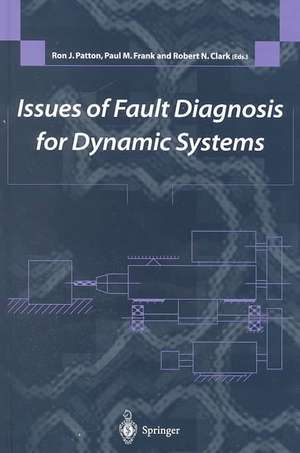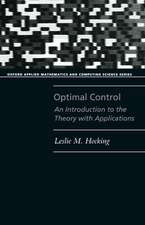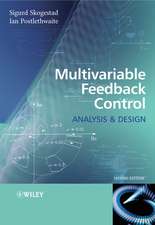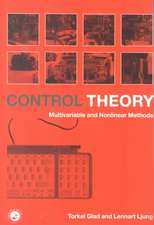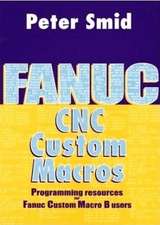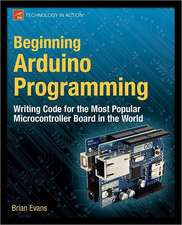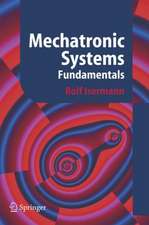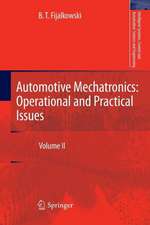Issues of Fault Diagnosis for Dynamic Systems
Editat de Ron J. Patton, Paul M. Frank, Robert N. Clarken Limba Engleză Hardback – 28 mar 2000
| Toate formatele și edițiile | Preț | Express |
|---|---|---|
| Paperback (1) | 1287.78 lei 43-57 zile | |
| SPRINGER LONDON – 12 oct 2010 | 1287.78 lei 43-57 zile | |
| Hardback (1) | 1294.55 lei 43-57 zile | |
| SPRINGER LONDON – 28 mar 2000 | 1294.55 lei 43-57 zile |
Preț: 1294.55 lei
Preț vechi: 1618.19 lei
-20% Nou
Puncte Express: 1942
Preț estimativ în valută:
247.71€ • 259.32$ • 204.96£
247.71€ • 259.32$ • 204.96£
Carte tipărită la comandă
Livrare economică 07-21 aprilie
Preluare comenzi: 021 569.72.76
Specificații
ISBN-13: 9783540199687
ISBN-10: 3540199683
Pagini: 624
Ilustrații: XXV, 597 p.
Dimensiuni: 155 x 235 x 39 mm
Greutate: 1.05 kg
Ediția:2000
Editura: SPRINGER LONDON
Colecția Springer
Locul publicării:London, United Kingdom
ISBN-10: 3540199683
Pagini: 624
Ilustrații: XXV, 597 p.
Dimensiuni: 155 x 235 x 39 mm
Greutate: 1.05 kg
Ediția:2000
Editura: SPRINGER LONDON
Colecția Springer
Locul publicării:London, United Kingdom
Public țintă
ResearchDescriere
Since the time our first book Fault Diagnosis in Dynamic Systems: The ory and Applications was published in 1989 by Prentice Hall, there has been a surge in interest in research and applications into reliable methods for diag nosing faults in complex systems. The first book sold more than 1,200 copies and has become the main text in fault diagnosis for dynamic systems. This book will follow on this excellent record by focusing on some of the advances in this subject, by introducing new concepts in research and new application topics. The work cannot provide an exhaustive discussion of all the recent research in fault diagnosis for dynamic systems, but nevertheless serves to sample some of the major issues. It has been valuable once again to have the co-operation of experts throughout the world working in industry, gov emment establishments and academic institutions in writing the individual chapters. Sometimes dynamical systems have associated numerical models available in state space or in frequency domain format. When model infor mation is available, the quantitative model-based approach to fault diagnosis can be taken, using the mathematical model to generate analytically redun dant alternatives to the measured signals. When this approach is used, it becomes important to try to understand the limitations of the mathematical models i. e. , the extent to which model parameter variations occur and the effect of changing the systems point of operation.
Cuprins
Integration of Fault Detection and Diagnosis Methods.- Observability and Redundancy Decomposition Application to Diagnosis.- Fault Detection and Isolation for Linear Systems Using Detection Observers.- Fault Detection and Isolation for Descriptor Systems.- Robust Observer-Based Fault Diagnosis in Non-Linear Uncertain Systems.- Uncertainty Modelling and Robust Fault Diagnosis for Dynamic Systems.- Reliability Models for Sensor Fault Detection with State-Estimator Schemes.- A Structural Framework for the Design of Fdi System in Large Scale Industrial Plants.- Structured Parity Equations in Fault Detection and Isolation.- Input Design for Change Detection.- On-Line Detection and Diagnosis of Sensor and Process Faults in Nuclear Power Plants.- Application of Sensor Fault Classification Algorithms to a Benson Steam Boiler.- Detection of Events in Signals Via the Model-Based Fault Diagnosis Approach: Application to Bio-Electrical Signals.- A Study on Fault-Tolerant Integrated Navigation Systems.- A Hierarical Structure for On-Line Process Fault Diagnosis Based on Deep Qualitative Modelling.- Fault Diagnosis Based on a Predicate Logic Description of Dynamical Systems.- Monitoring and Diagnosis of Fermentation Processes.- Process Monitoring and Fault Detection Using Multivariate Spc.- References.
Caracteristici
A far-reaching and comprehensive survey of the methods involved with monitoring safety-critical systems
Edited by three of the major names in the field of fault tolerance
Each chapter written by an expert on the subject in question
Edited by three of the major names in the field of fault tolerance
Each chapter written by an expert on the subject in question
